
The single central crown is always a challenge. It may take multiple tries ‘costing’ the clinician, laboratory and patient. But understanding the impact of surface texture, restoration contour and how to control color can make this a less arduous task and one that can be done on the first try. This article is to demonstrate a couple of things. First how surface texture affects color, how contour can mask color discrepancy and the importance of color in a case. We need the laboratory to get things close, and then we can take over. I am amazed by how the good technicians at Corr Dental Designs often get the color right just from the photos we send. In one of the last articles I did for this newsletter I emphasized the need for good photography for treatment planning, case presentation, laboratory communication, and, ultimately learning from every case we do. Let me walk you through the first half of an interesting case.
Our patient was not happy with the crown on tooth #9 (Figure 1). The color did not match and there was a dark triangle in the mesial embrasure. The dreaded single central raised its difficult head again. In this article, we will present the considerations during the preparation appointment.
While the patient was getting numb we began taking photos before the teeth desiccated and I wanted shadows to be cast on the facial of the tooth to show the surface texture and characterization of tooth #8 (Figure 2 and 3).
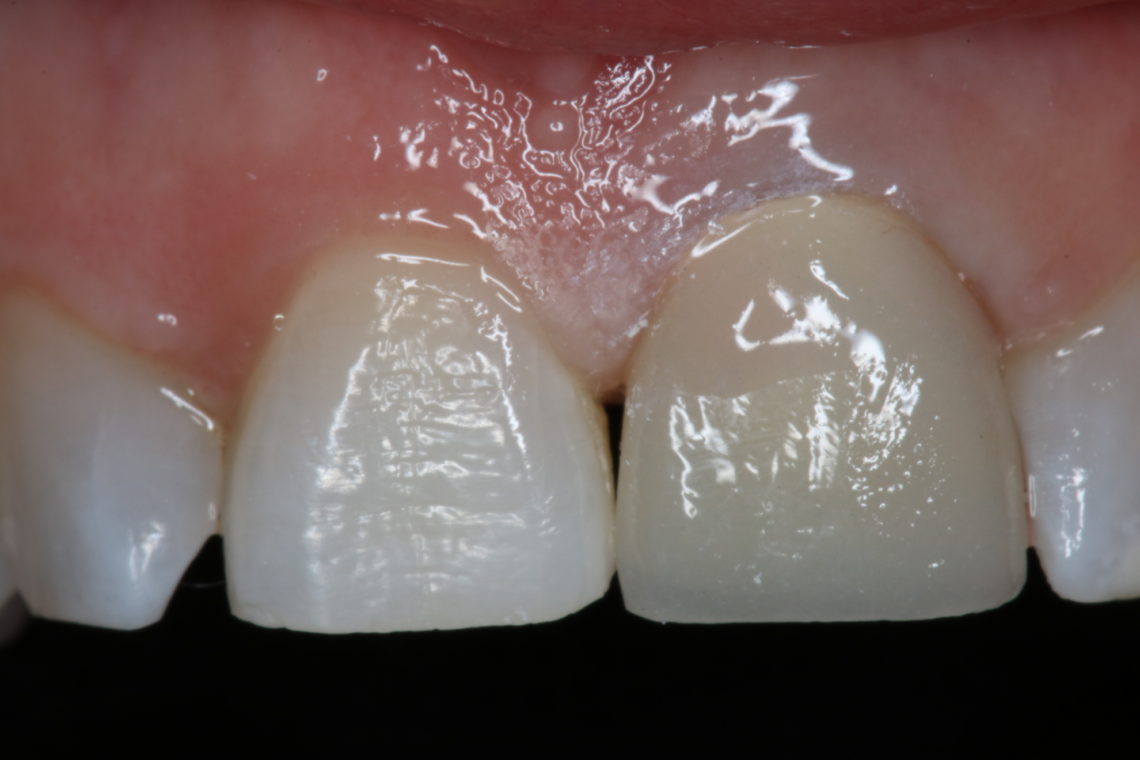
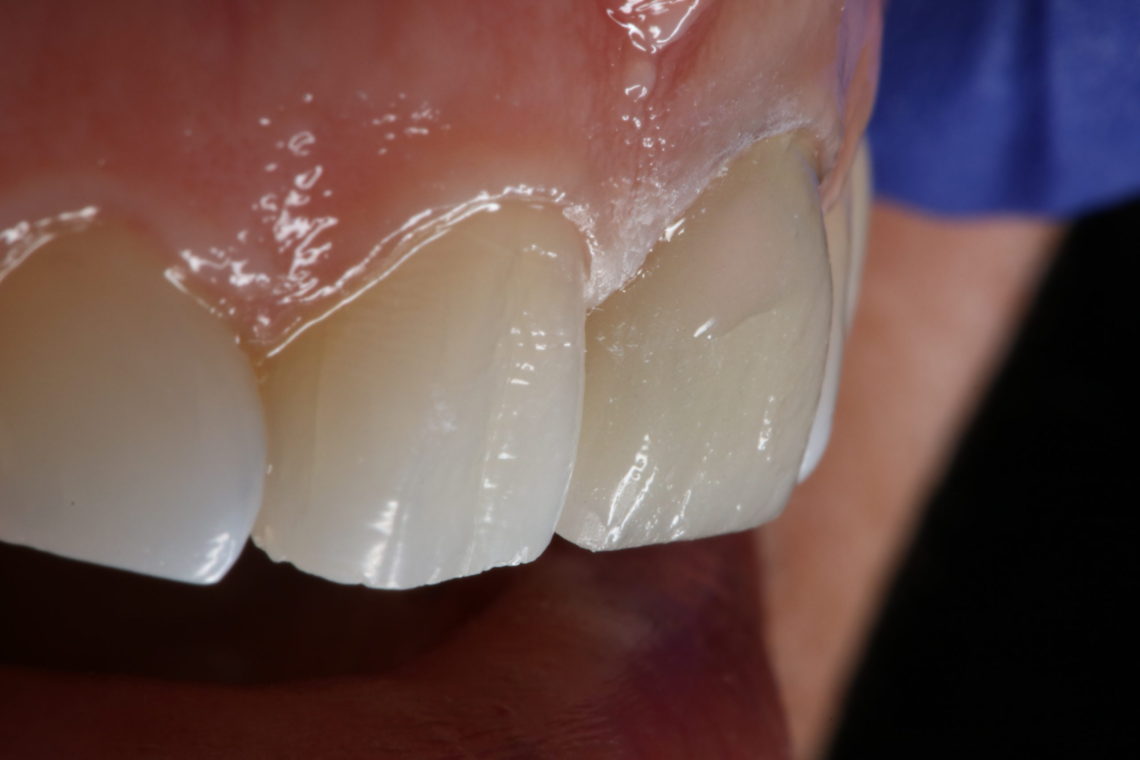
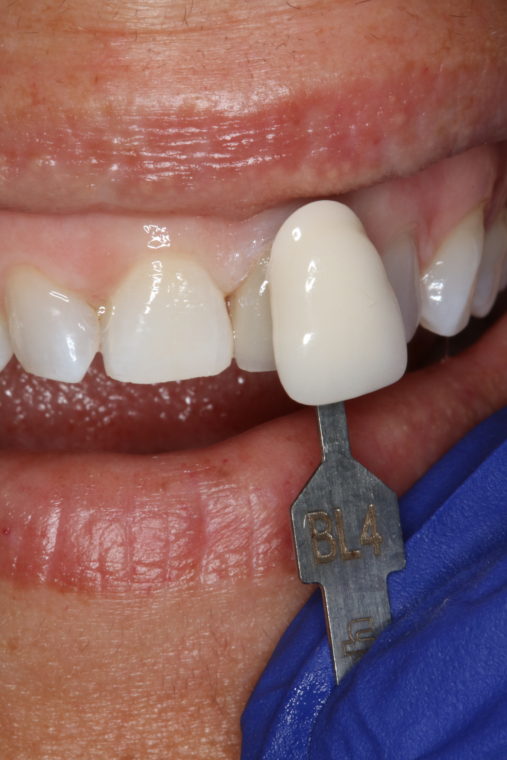
We took an impression of tooth #9 with Template Ultra Quick Matrix Material, a silicone matrix material, from Clinician’s Choice (Figure 4). This material sets in 30 seconds and creates a very nice impression which will be used to make the temporary. The great thing about this material is that you can keep this impression to remake your temporary in the unlikely event a new temporary has to be fabricated (it is this author’s belief that soft white bread is often the last food eaten that will break or dislodge a temporary.)
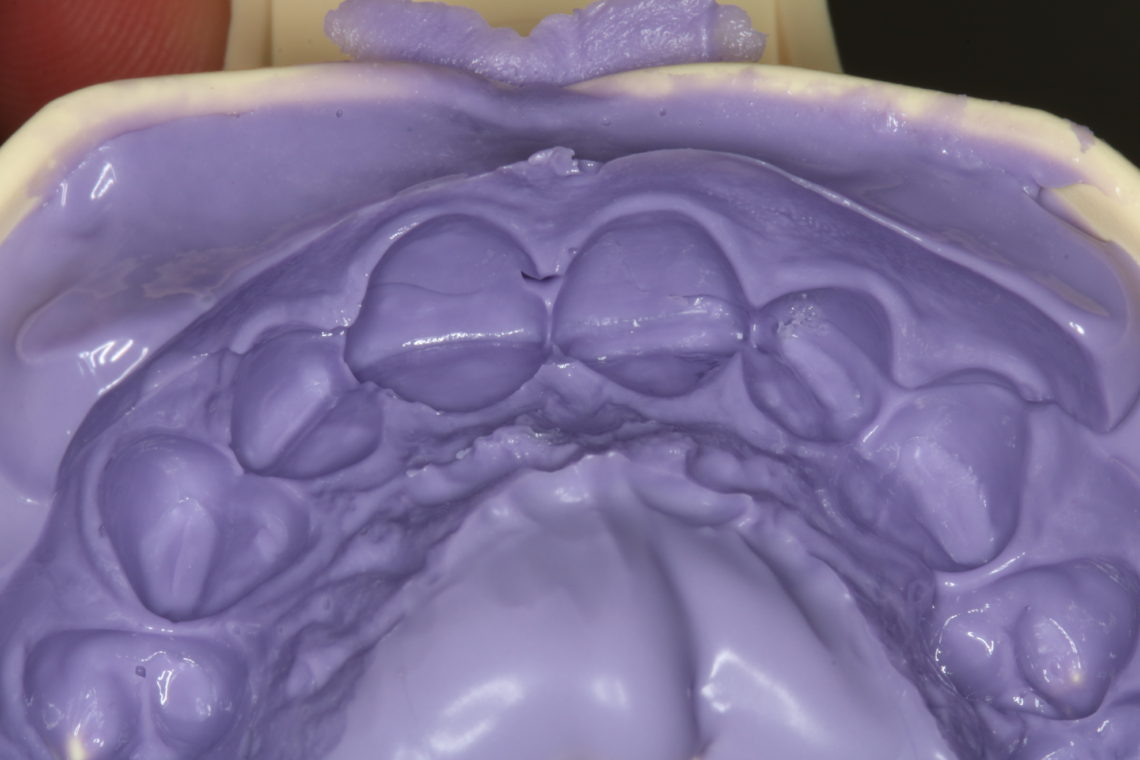
When the tooth was prepared, we could see the shade of the tooth was very dark, a St5 shade (Figure 5). We could have left the preparation this color and then used a more opaque restorative material. The more opaque the crown material, the less aesthetic the restoration typically looks. I elected to sub-opaque the preparation with composite to make the laboratory’s job easier (Figure 6). The final preparation was a St9, I left the cervical warmth.
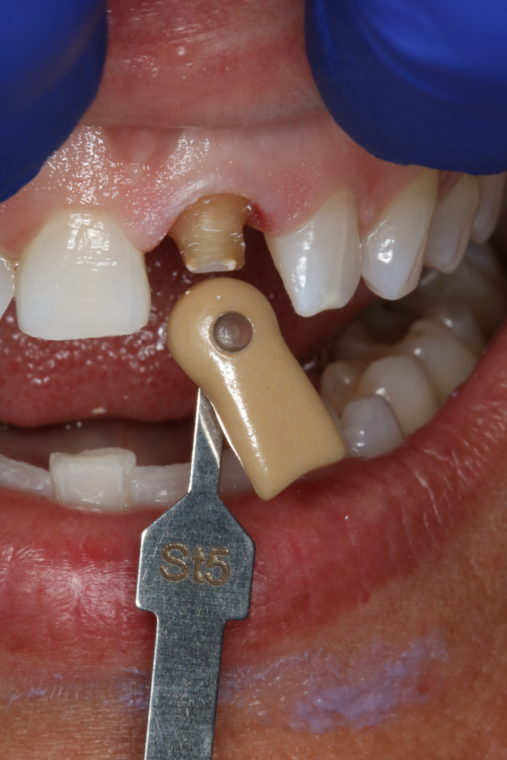
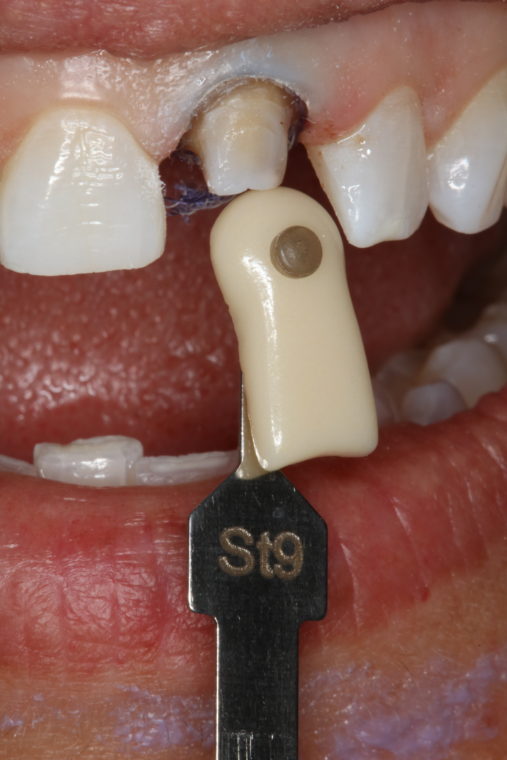
The impression was made with Danville’s Half-time wash and tray impression material (Figure 7).
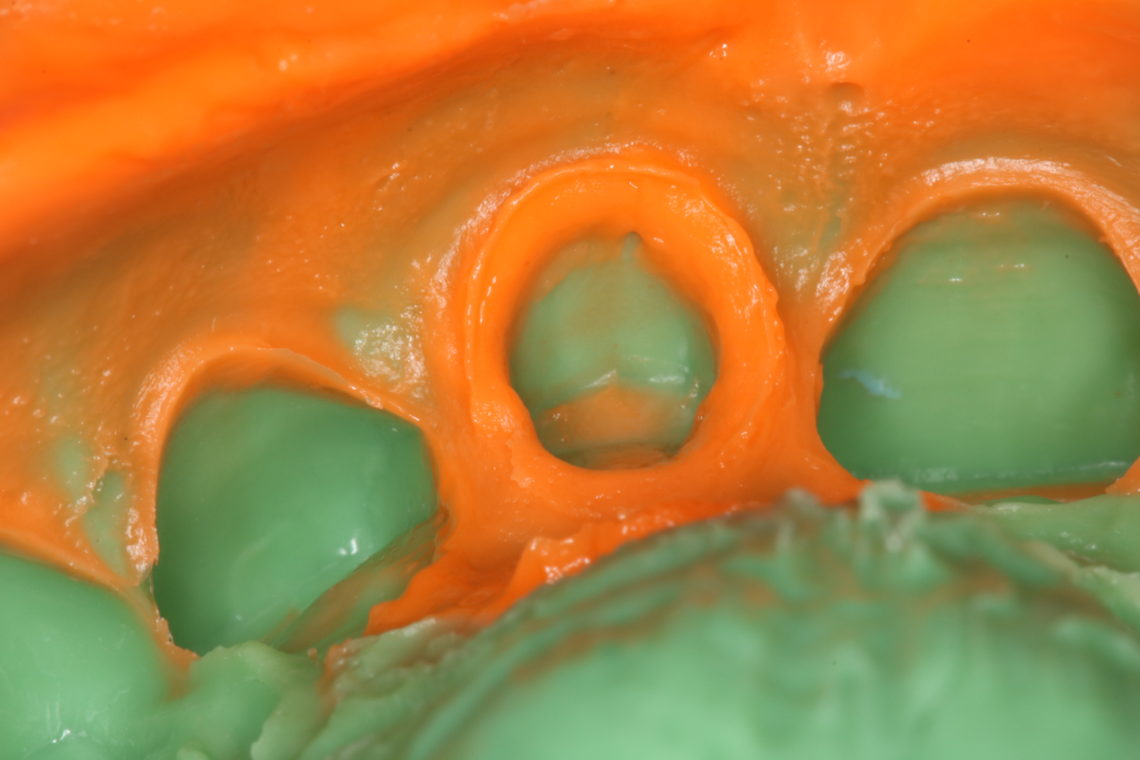
And, finally, the pre-operative impression was filled with Clinician’s Choice Inspire provisional material and seated over the preparation (Figure 8). I usually let the temporary shrink wrap on, but in this case, I removed it work on the surface texture and contour.
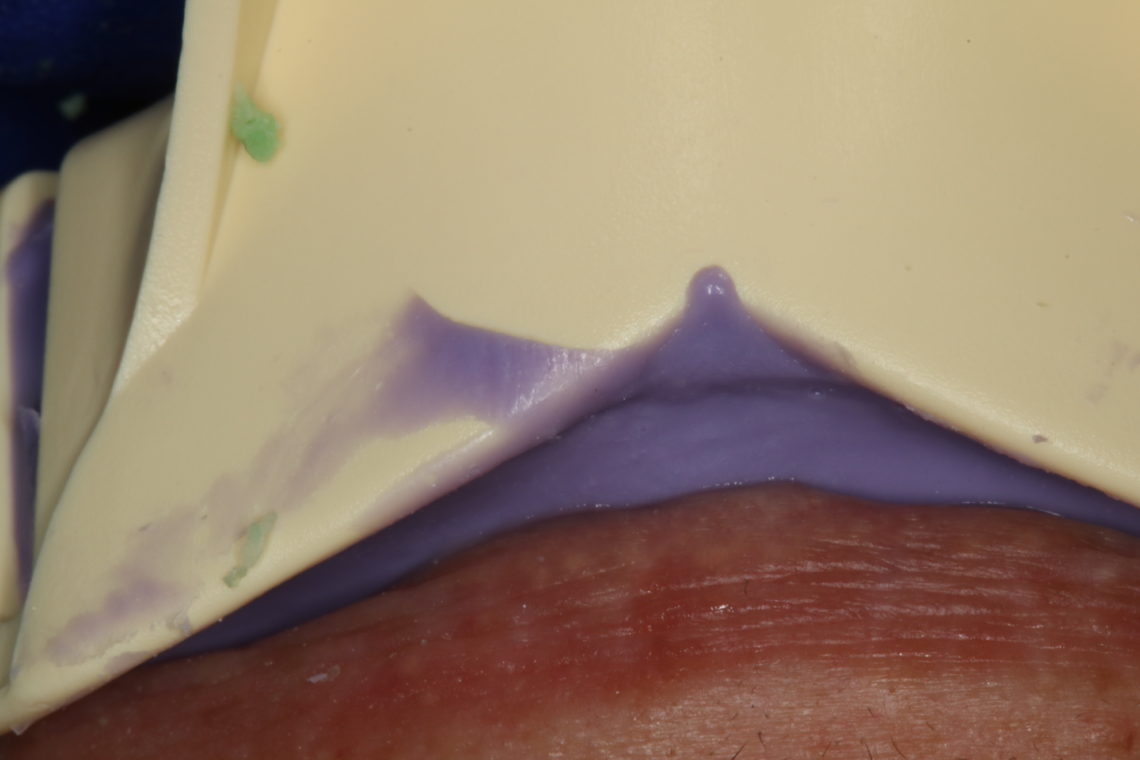
The temporary came out very nice and closed the dark triangle between #8 and 9, but it lacked surface texture and it looked bigger than tooth #8. I used a coarse diamond to duplicate the surface texture of tooth #8. I like taking photos while I work as the flash’s light reflection gives me a different perspective than what I see with my loupe light. I over accentuated the grooves because I will be polishing and glazing the surface.
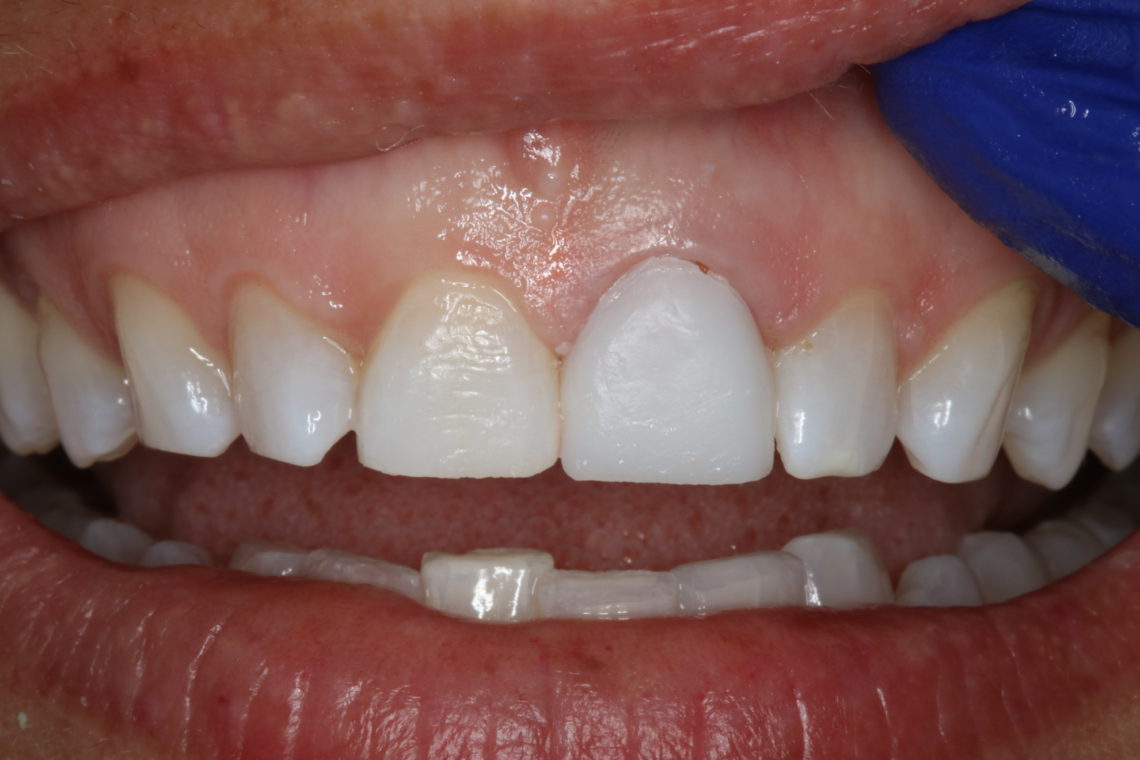
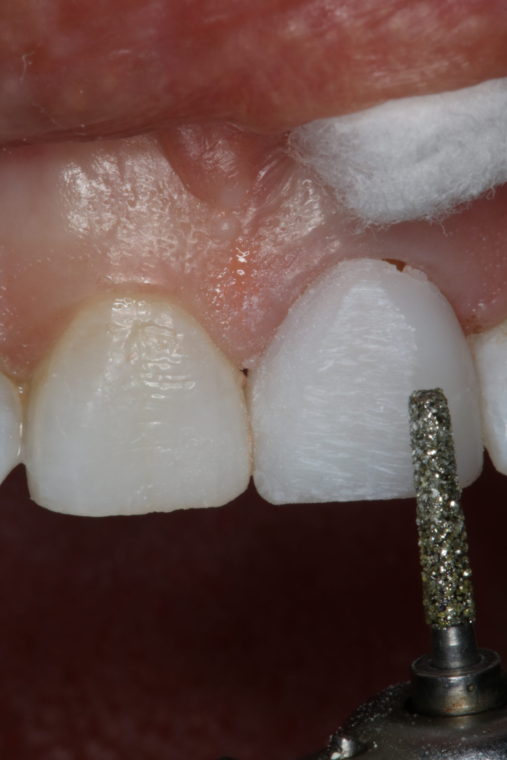
Polishing with a disc often removes all the surface texture so I find using flexible spiral polishers like the All Surface Access Polishers (ASAP) from Clinician’s Choice works very well to smooth the surface, but still leaves the surface texture placed that we had placed (Figure 11).
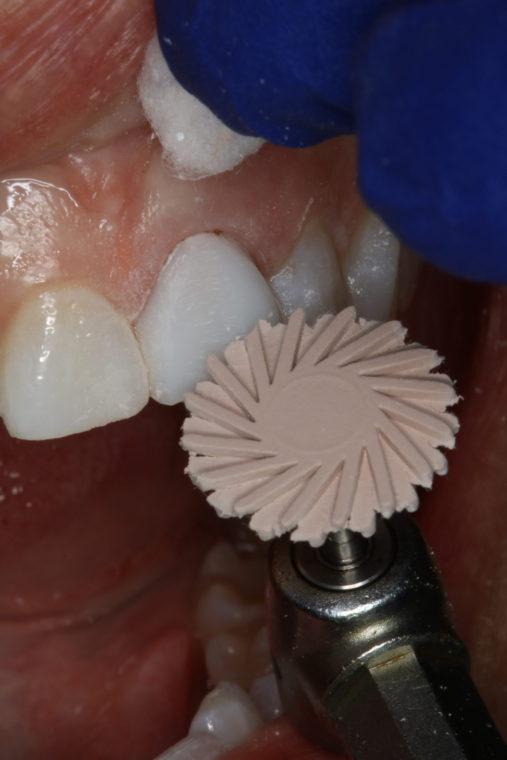
And to get the final polish I like to use a glaze, such as Clinician’s Choice Glisten Provisional Resin Glaze (Figure 12). It is placed on the temporary, thinned with air, light-cured for 10-20 seconds and the temporary restoration is ready to insert.
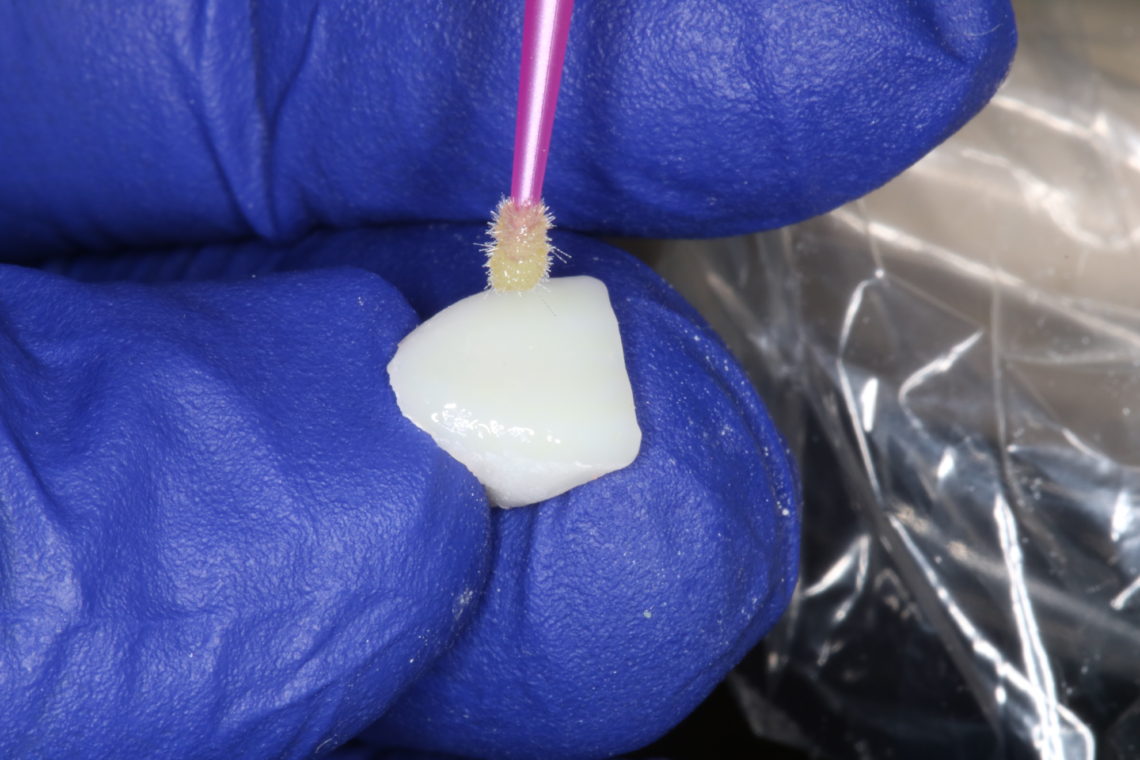
The final temporary (Figure 13) had a nice shine and the patient was very pleased with the improved color and that the dark triangle between teeth #8 and 9 was closed by the improved contour.

Here are some take-home points. Placing more surface texture will deflect the light that comes off the restoration resulting in a lowering of the value. I find that if we get the tooth length, shape and embrasures right (incisal, facial) a slight color discrepancy isn’t noticeable (the opposite is not true). And there are many ways we can help the lab match the color and, in this case, we choose to sub-opaque the preparation making it easier for the laboratory to give us a naturally translucent crown.
I hope you picked up a couple of tips to help you when you have another single unit case. I hope you feel confident knowing that these cases should be predictable, but don’t just rely on the laboratory. Knowing how to control the surface texture, contour and color will help every day in almost every case you do. Give me a shout out if you want to see how the case ended up.
If you have questions about my article or if you would like to send a case, please contact the Pacific Aesthetic Laboratory Group at www.pacificaestheticdentalstudio.com, Gary Vaughn, CDT, CTO, (888) 461-3331, or via email gvaughn@thePAC.org
